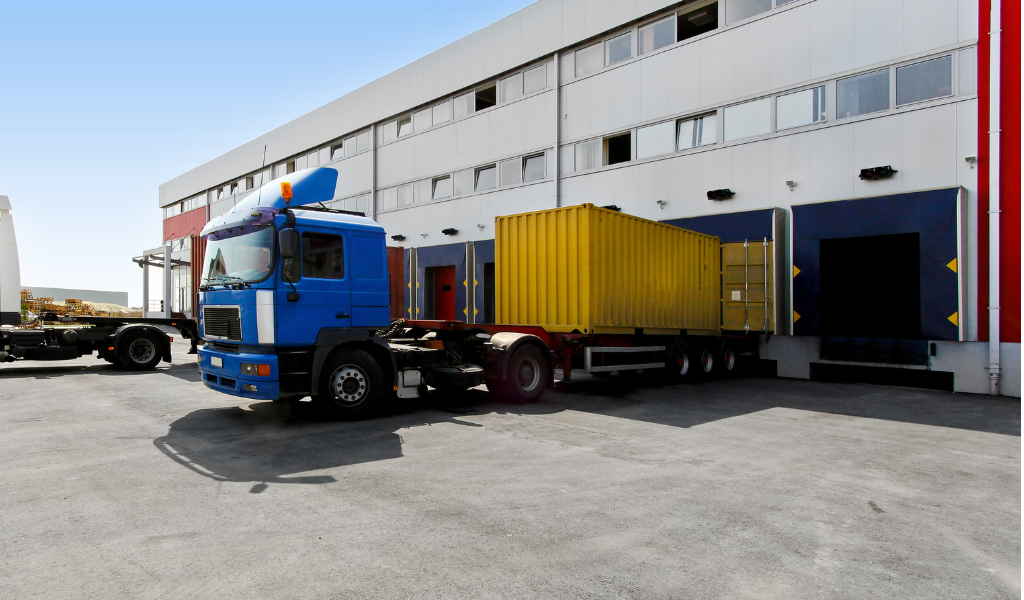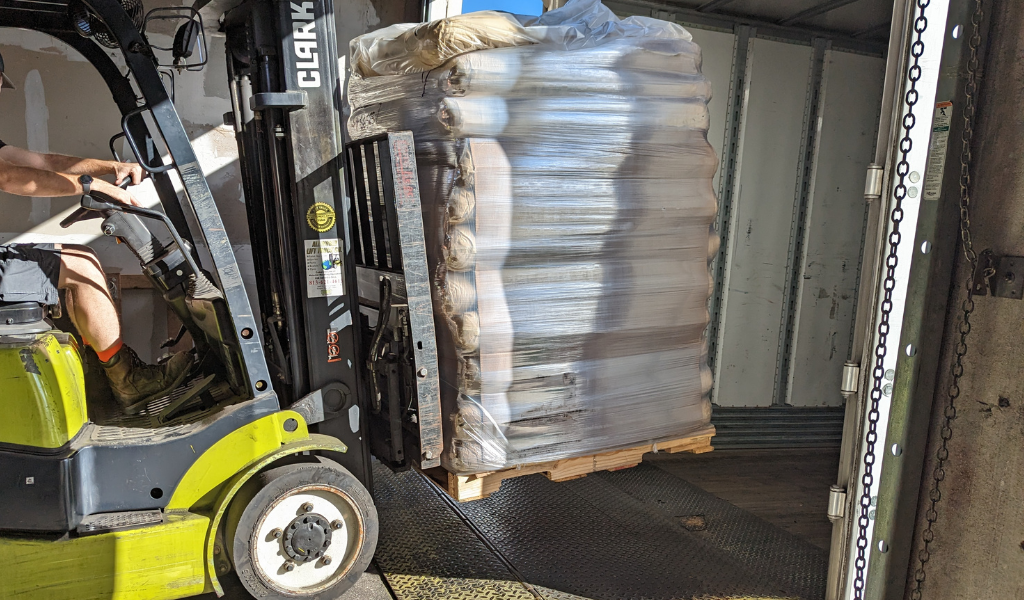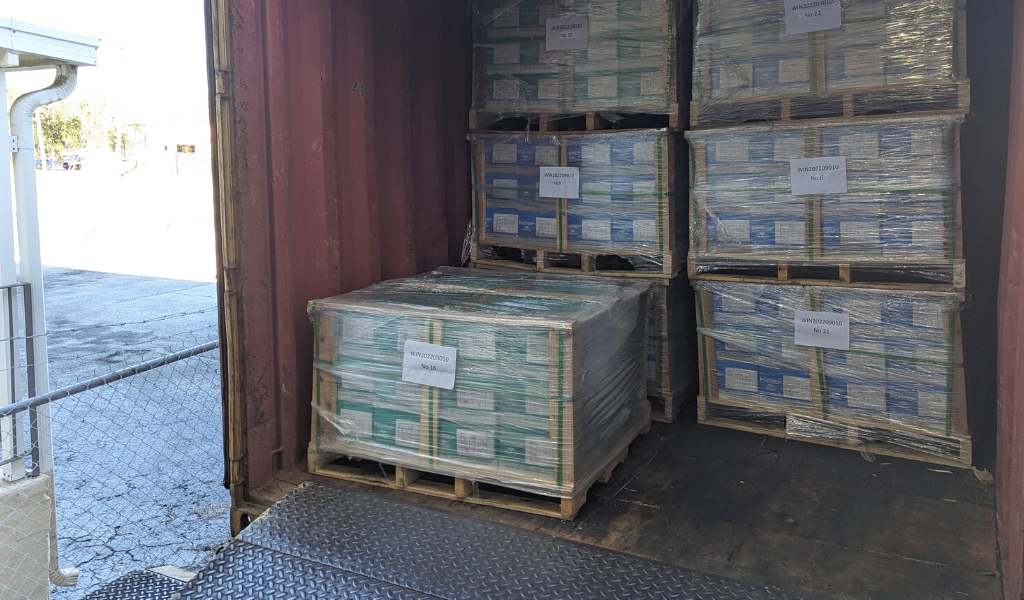In today’s global supply chain, one of the most cost-effective ways to move non-bulk freight is in ocean containers. Shipping containers, which are large, made of steel, and reusable, serve as the primary means of shipping goods between International Shippers and Receivers. The Shipper and Receiver agree on the contents of the container. Then the Shipper loads the container by either (1) palletizing freight and loading the stacked pallets into the container, or (2) loosely packing cartons into the container to fill every cubic foot of space. Once the Shipper fills the container, it is taken to the port and loaded onto a shipping vessel or railcar for transportation to the final destination. Upon arrival, the container unloading starts; the goods are separated into storable units, and then stored or shipped on to the next step in the supply chain.
To get the most value from container unloading services in your internal supply chain, it is important to consider when and where you handle containers. Is your product sitting at port longer than expected? When do you pay additional fees for storage or equipment-return delays? For example, shippers must return the containers and chassis to designated locations on tight timelines or pay additional fees.
🔍Find a Container Unloading Warehouse Near You.

In many cases, it is unrealistic for the shipping container, that arrives on an Ocean Vessel, to deliver directly to its final destination. This is why it is often helpful to work with a cross-dock or transloading warehouse for container unloading.
Container unloading warehouses have the right equipment and skilled staff to handle nearly any cross-docking need or container transloading solution your company needs.
Transload Now Offers Container Unloading Services
Flexible, third-party warehouse partners can help fill gaps.
- Unload palletized containers
- Unload loose-loaded ocean and rail containers
- Flexible warehousing & storage services
- Handle containers of all standard sizes
- 20-foot GP (General Purpose) container
- 40-foot GP (General Purpose) container
- 40-foot HC (High Cube) containers
- Reefer Containers of various dimensions
- Hardtop containers
- Available upon request
- Flat rack containers
- Open Top Container
- Insulated Containers
- Platform container and oversized loads
- Unload containers that require:
- General, dry van merchandise handling and storage
- Food-grade products requiring FDA-certification
- Temperature-controlled goods
- Specialized equipment such as carpet poles
- & Other Custom Needs

Benefits of Container Unloading Services

Here are some of the benefits customers receive when Transload Now handles your Containers.
- Same-day, on-demand delivery appointments keep goods flowing.
- Get your freight out of the port ASAP.
- Book a delivery appointment in less than 3-hours at the warehouse.
- Then, move the product closer to customers.
- Clean and secure warehouse environments monitored with cameras and alarms.
- Flexible staff that knows things are always changing in logistics.
- We work with you and make adjustments as needed to get the job done.
- Prompt communication and status updates along the way.
- Near major Interstates, Ports, and other logistics hubs.
- Easy to work with team that gets the job done right the first time.
- Re-delivery and other value-added services are available.
- Everything from booking truckloads to preparing goods for Amazon FBA.
- Looking for a one-stop shop? We can help.
Looking for customized container unloading solutions to meet all your needs? Get in touch to learn more.
Keep Product Moving To & From the Port Using Container Unloading Services
Reliable, Third-Party Warehouse Partners Handle Operations & Quality Control
Depending on what industry you’re in, importing and exporting goods is inevitable in today’s world. Manufacturers, distributors, suppliers, retailers, eCommerce sellers, and much more are a few examples of businesses that often rely heavily on importing inventory or raw materials from other countries so they can perform their core business of selling or manufacturing. Since Covid-19, shipping rates have reached all-time highs and businesses have been forced to look for creative opportunities to reduce their shipping costs and lead times. Note, at the time of writing this article in 2023, prices have lowered but are nowhere near pre-Covid prices for containers.
There are cost reduction opportunities in trying new transport routes and consolidating freight near logistics gateways in your supply chain. Often this means businesses are importing into new ports or areas they’ve never worked before to test out new supply chain routes. Along the way, it’s important to partner with local warehouses and drayage carriers to coordinate the smooth flow of goods from the port to their final destination.
Case Study – Unload Palletized Containers in Chino, CA
Suppliers often buy large quantities of products on Purchase Orders to fulfill their customers’ orders and restock inventory levels. Of course, this makes sense since larger Purchase Orders typically receive a larger discount from the manufacturer compared to purchasing several smaller POs at different times.
In this case study, we will look at Evan’s project in Chino. Evan is a freight broker with a customer that supplies companies with screws.
The Supplier sells entire 20-foot containers of screw fasteners, for construction projects, to individual customers in Southern California. The customers purchase screws that are palletized, triple-stacked, and shipped in a 20-foot GP steel container. Unfortunately, the construction project sites cannot unload containers effectively, so they prefer to receive the pallets via other modes of transportation like 53-foot dry vans or flatbeds.
Transload Now warehouses help Evan’s customer get the containers from the port, unload the pallets, store them for 0-3 days, and then ship the pallets to the customers via their preferred mode of transportation. Sometimes, we receive more than one container per import and separate the loads to different job sites in the outbound shipments.
Ultimately, everyone wins in this container unloading example, because the Supplier gets to import the product as densely as possible and the customer receives the product how and when they need it without causing problems on job sites.

🔍Find a Transload Now Warehouse Near You.
Have You Seen Enough? Let’s Work Together.
“Great service. Would use again.”
Anthony A.
